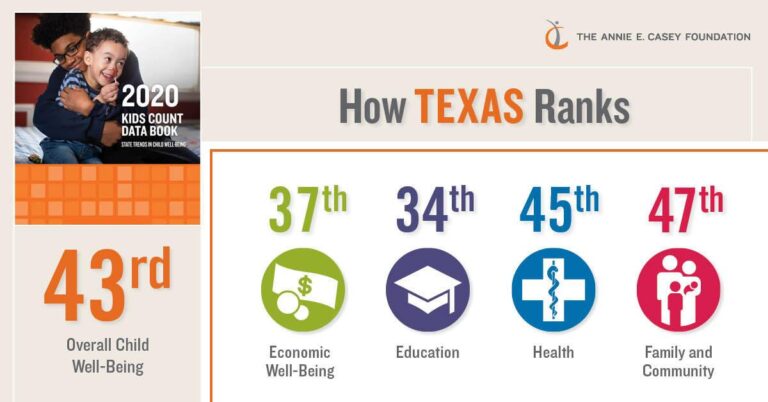Texas in the U.S. News Best States Rankings: A Comprehensive Analysis
Renowned for its expansive terrain, multifaceted economy, and vibrant cultural fabric, Texas has once again captured national attention through the latest U.S. News & World Report Best States Rankings. As the second-largest state by both population and landmass, Texas’s ranking offers valuable insights into its performance across critical sectors including healthcare, education, infrastructure, and economic vitality. This article explores Texas’s current standing, the driving factors behind its rank, and the implications for its residents and decision-makers.
Robust Economic Growth and Labor Market Dynamics
Texas continues to assert itself as a formidable economic engine within the United States. The state’s Gross Domestic Product (GDP) growth consistently surpasses the national average, fueled by a broad industrial spectrum that spans energy, technology, manufacturing, and healthcare services. Noteworthy elements bolstering Texas’s economic prowess include:
- A thriving energy sector that balances traditional oil and gas production with rapid expansion in renewable energy sources such as wind and solar power
- The emergence of vibrant technology corridors in metropolitan hubs like Austin, Houston, and Dallas
- Strong export activities that enhance manufacturing output and global trade connections
- A business-friendly regulatory environment that attracts startups and multinational corporations alike
Complementing this economic strength is Texas’s resilient labor market. The state enjoys steady job creation and maintains unemployment rates below the national average. Its diverse employment landscape offers opportunities ranging from skilled trades to high-tech professions. Population growth, particularly in urban centers, continues to drive labor demand and economic dynamism. The table below compares key employment metrics between Texas and the national average for 2024:
| Employment Indicator | Texas | U.S. Average |
|---|---|---|
| Unemployment Rate | 3.5% | 3.9% |
| Annual Job Growth | 2.8% | 1.9% |
| Labor Force Participation | 64.2% | 62.6% |
Addressing Educational and Healthcare Obstacles
Despite its economic achievements, Texas faces notable challenges in education and healthcare that impact its overall ranking. The public education system contends with uneven funding, disparities in academic achievement across districts, and shortages of qualified teachers, especially in STEM and special education fields. While urban school districts often report strong performance, rural areas frequently struggle with limited access to quality education and resources, contributing to statewide inconsistencies.
Healthcare access remains a pressing concern. Texas has one of the highest uninsured populations in the country, which adversely affects health outcomes and the state’s healthcare quality ratings. The vast geographic expanse complicates the delivery of specialized medical services, particularly in remote communities. Enhancing preventive care and expanding healthcare infrastructure are critical steps toward improving these metrics.
| Challenge | Sector | Effect on Rankings |
|---|---|---|
| Teacher Shortages | Education | Lower Academic Achievement Scores |
| High Rate of Uninsured Residents | Healthcare | Reduced Health Outcomes |
| Resource Disparities in Rural Areas | Education & Healthcare | Unequal Regional Performance |
Infrastructure Enhancements Fueling Competitiveness
Texas is actively investing in infrastructure projects that strengthen connectivity and support economic growth across both urban and rural regions. Efforts to expand highway systems, upgrade airports, and improve public transit have alleviated congestion and enhanced mobility, making the state more attractive to businesses and residents. Notable initiatives include the ongoing expansion of Dallas-Fort Worth International Airport and plans for high-speed rail corridors aimed at linking major metropolitan areas.
- Widening and modernizing interstate highways with integrated smart traffic technologies
- Developing renewable energy-powered transportation infrastructure
- Creating multimodal transit centers that seamlessly connect bus, rail, and air travel
- Implementing urban renewal projects that promote pedestrian and bicycle-friendly environments
| Project | Current Status | Expected Impact |
|---|---|---|
| Dallas-Fort Worth Airport Expansion | In Progress | Capacity increase by 35% |
| I-35 Corridor Smart Traffic Upgrades | Completed 2023 | 20% reduction in commute times |
| High-Speed Rail Feasibility Study | Planning Phase | Potential to enhance regional connectivity |
Pathways to Elevate Texas’s Future Rankings
To improve its standing in forthcoming U.S. News Best States evaluations, Texas must focus on targeted reforms and investments. Prioritizing education reform to close achievement gaps and better prepare the workforce is essential. Expanding healthcare access through increased clinic availability and telehealth services will address the high uninsured rate. Additionally, accelerating investments in renewable energy can foster job creation while mitigating environmental impacts. Upgrading transportation infrastructure remains vital to support economic activity and reduce congestion.
- Boosting education funding with an emphasis on STEM and vocational training
- Expanding affordable healthcare access via community clinics and telemedicine
- Investing in clean energy projects to drive sustainable economic growth
- Modernizing transportation networks to improve efficiency and connectivity
| Initiative | Anticipated Benefits | Implementation Timeline |
|---|---|---|
| Education Reform | Improved academic outcomes and workforce readiness | 3-5 years |
| Healthcare Expansion | Reduced uninsured rates and enhanced public health | 2-4 years |
| Renewable Energy Development | Job growth and lower carbon emissions | 5-10 years |
| Transportation Infrastructure Upgrades | Greater mobility and economic efficiency | 4-6 years |
Conclusion: Navigating Texas’s Complex Landscape
In conclusion, Texas’s performance in the U.S. News & World Report Best States Rankings reflects a nuanced blend of robust economic opportunity and persistent challenges in education and healthcare. The state’s ongoing infrastructure projects and strategic initiatives position it well for future advancement. For policymakers and citizens, these rankings serve as both a reflection of current realities and a guide for targeted improvements that can enhance quality of life across Texas’s diverse communities.







